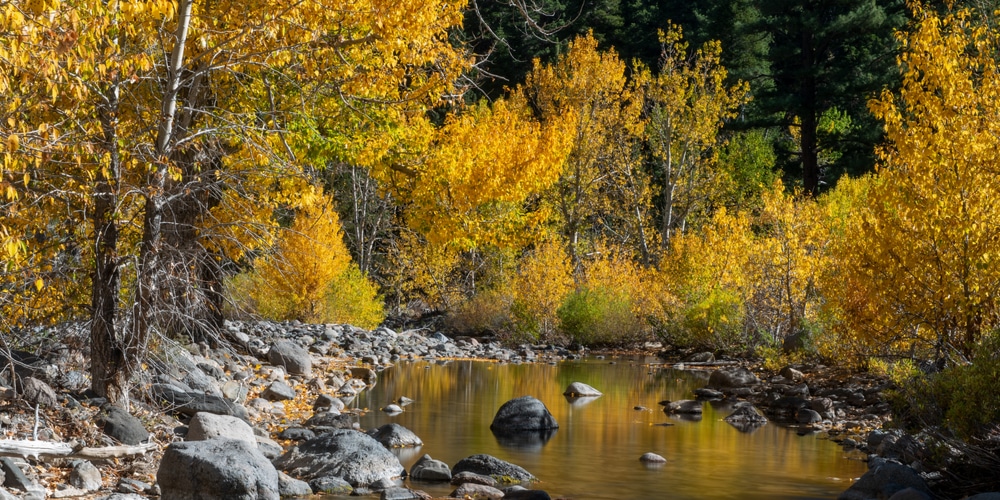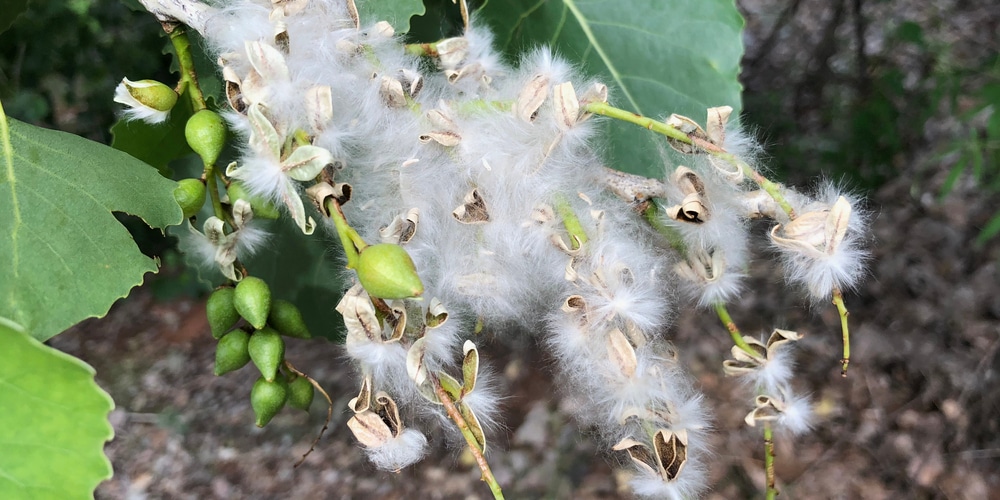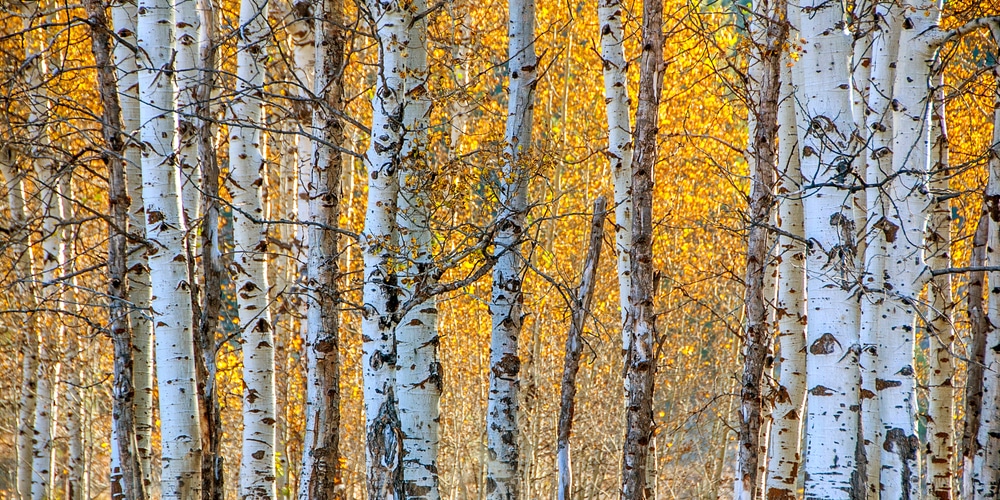Cottonwood trees are prevalent in Maine, even more so than you might think. It’s surprising to some that various trees beside the eastern cottonwood fall into the cottonwood category. In this article, we’ll discuss which of these trees can be spotted in Maine.
Do Cottonwood Trees Grow in Maine?

Cottonwood trees do grow in Maine. Species that belong to the genus of Populus grow throughout the state of Maine. In common usage, the name cottonwood refers to eastern cottonwoods, but the name can also refer to poplars, aspens, and sometimes willows.
Confusion in the nomenclature is typically avoided by strictly referring to eastern cottonwoods when using the name “cottonwood”. Using a binomial (or scientific name) when referring to poplar species is preferred when discussing poplars to avoid confusion.
Eastern Cottonwood (Populus Deltoides)
Eastern cottonwoods are deciduous trees native to Maine with statewide distribution. These large trees have the potential to reach 100 feet in height with a canopy spread of 75 feet. Their rapid growth and magnitude made them an attractive option for early landscape design in cities.
Recently, however, eastern cottonwoods have declined in popularity as a street and park tree in cities. The tree is an effective propagator with an aggressive root system. Eastern cottonwood root systems are frequently responsible for sidewalk uplift and sewer damage.
The eastern cottonwood gets its name from the white, fluffy, stringy substance that resembles cotton that surrounds the tree seeds. In commercial applications, eastern cottonwoods are regularly used for wood pulp.
Quaking Aspen (Populus Tremuloides)
Quaking aspen is easily identifiable in late spring, summer, and early fall by its trademark leaves that appear to tremble in the wind. The trembling character of the quaking aspen’s leaves comes from the flattened petiole of the leaf. A petiole is the name for the joint that connects the leaf to the leaf stem.
Quaking aspens are endemic to Maine and can be found throughout the state. Although the wood of quaking aspen is soft and is subject to rapid decay, the tree has a variety of commercial uses, including wood pulp and plywood.
Big Tooth Aspen (Populus Grandidentata)
Big tooth aspen is endemic to Maine with a statewide distribution. The big tooth aspen is similar in appearance to quaking aspen but has greater shade tolerance and a more robust growth pattern. A key feature that distinguishes the two species is the leaf. The leaf of the big tooth aspen has a broad, stout, oblong shape with large, defined teeth, while the quaking aspen has finer teeth.
Big tooth aspen is used for the same products and processes as quaking aspen, including wood pulp and plywood.
Balsam Poplar (Populus Balsamifera)
Balsam poplar is endemic to Maine and can be found throughout the state except in York county: the southernmost county of Maine that borders New Hampshire. Balsam poplar has a broad growth pattern for a Populus species and features stout branches with a gnarled appearance.
A white stringy substance, similar in appearance to cotton, coats the seeds of Balsam Poplars. This cotton substance helps Balsam Poplar seeds travel vast distances on wind currents.
Invasives
Maine is also home to white poplar (Populus alba) and black poplar (Populus Nigra), two invasive species with aggressive propagation habits endemic to central and eastern Europe and some parts of northern Africa.
White poplar and black poplars are deciduous trees that mature rapidly. Although similar in appearance to quaking aspen and big tooth aspen, white and black poplars are invasive species that threaten Maine’s forested ecosystems.

